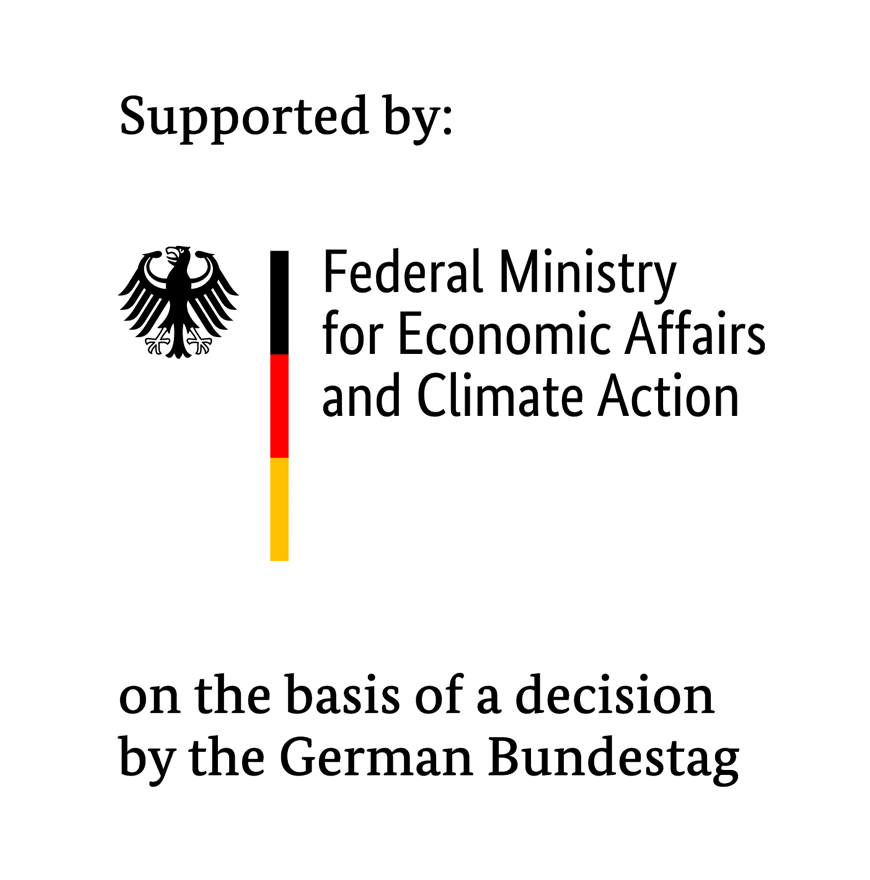X-Wakes – Interaction between the Wakes of Large Offshore Wind Farms and Wind Farm Clusters with the Marine Atmospheric Boundary Layer
| Funding: | Federal Ministry for Economic Affairs and Climate Action (BMWK) |
| Total funding: | EUR 1,303,341 |
| Partners: | Technical University of Braunschweig, Karlsruhe Institute of Technology (KIT), University of Oldenburg (Center for Wind Energy Research, ForWind), University of Tübingen, Helmholtz-Zentrum Geesthacht, UL International GmbH |
| Duration: | 11/2019 - 04/2023 |
- Offshore wind energy has a central role to play in terms of the energy supply with renewable energies.
- Given the limited amount of usable space, offshore wind farms are set up in so-called clusters.
- As a result, wind farms and the individual turbines interact. Wakes with low wind speeds and considerable turbulence develop in the wind shadow behind the turbines.
- The aim of the X-Wakes project is to record the changes in wind conditions when the operation of offshore wind farm clusters is expanded on a large scale.
- To this end, data will be collected using various measurement methods and, on the basis of this, models for future expansion scenarios will be developed.
- The Fraunhofer IWES is responsible for the further development of mesco-scale models and industry models with regards to the parametrization of very large wind farms and wind farm clusters.
The Federal Government’s plans for the energy revolution in Germany foresees a share of at least 80 percent of the gross electricity consumption being covered by renewable energies by 2050. Offshore wind energy is a fundamental pillar here. However, the space available for wind energy in the German Bight is limited, which is why wind farms are mostly built in clusters. Such clusters can comprise several hundred wind turbines. Wakes with low wind speeds and considerable turbulence develop in the wind shadow behind the turbines. Under certain atmospheric conditions, these wakes can extend for distances in excess of 50 kilometers.
In the X-Wakes research project, Fraunhofer IWES, together with six other partners, is investigating these wakes and other accumulative effects such as the global blockage effect to discover how the wind farm clusters influence each other as well as what consequences a large-scale expansion of the offshore wind farm will have on wind conditions in the future. Computer models will be enhanced using the results from this project in order to be able to predict the yields of the wind farms for future expansion scenarios under realistic conditions.
The researchers are employing a combination of complimentary methods. Stationary LiDAR measurements at different locations in the German Bight deliver meteorological data continuously. The extent of the wakes is analyzed on a large scale with the aid of satellite-based remote sensing data. Measuring campaigns with a research aircraft at low altitude also deliver high-resolution meteorological data.
Within the scope of the X-Wakes-A sub-project, the Fraunhofer IWES is responsible for the further development of meso-scale models for the parameterization of wind farms. For this, wind farm parameterization is further developed in the Weather Research and Forecasting (WRF) model and validated with the project’s measurement data. The model will subsequently be used to calculate the impact of realistic offshore expansion scenarios. Furthermore, methods for industry models to improve the visualization of waves from large wind farms and clusters as well as coastal effects will also be derived and documented in the Fraunhofer IWES sub-project.
